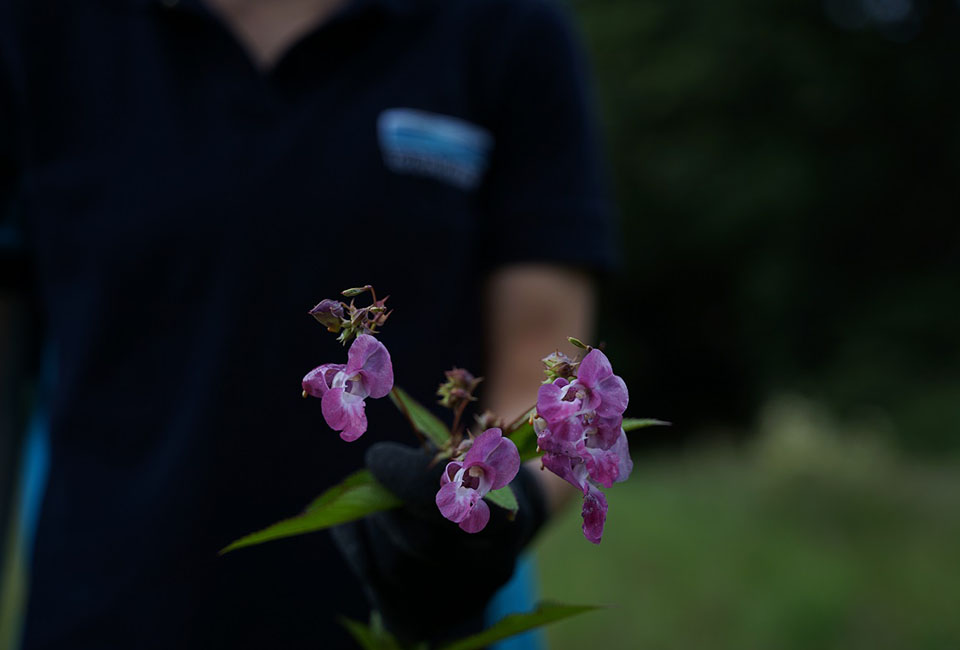Yorkshire Water volunteers tackle invasive species at Lindley Wood reservoir

7/31/2020
Volunteers from Yorkshire Water’s environmental team have been tackling invasive non-native species (INNS) at Lindley Wood reservoir in the Washburn Valley focusing on Himalayan balsam.
The plant, a native of the western Himalayas, is an annual species that can grow up to three metres in height. It has purplish-pink slipper shaped flowers which appear between June and late September.
It thrives in damp habitats and can take over riverbanks and woodland, crowding out native species. It can spread quickly as its seed pods can explode when touched scattering seed up to seven metres away.
The plant can be removed by hand, breaking the stem to prevent regrowth and seed production. However, once the plant starts to produce seeds it’s advised not to pull it as this could spread the seeds even further.
Volunteers spent time tackling Himalayan balsam at Lindley Wood to reduce its coverage across a species rich grassland and prevent further spread by removing it along footpaths.
Rachel Naden, lead ecologist for invasive species at Yorkshire Water, said: “At Yorkshire Water we’re responsible for large portions of land throughout the region and tackling invasive non-native species is just one element of our work.
“We need to work together to tackle Himalayan Balsam. We would encourage the public to be aware of it and the damage it can cause but also to act. We welcome initiatives such as the recent Calderdale campaign against balsam which has pulled numerous organisations including the Calder Rivers Trust, Environment Agency and National Trust, together to manage this plant at a catchment scale.”
People can also help to stop the spread of invasive plants and animals by following ‘Check, Clean, Dry’ protocols whenever they are enjoying Yorkshire’s countryside.
John Cave, project officer for Yorkshire Wildlife Trust, said: “I would encourage everyone to play their part in removing this invasive plant species. Himalayan balsam has wide ranging impacts on biodiversity and the health of important habitats, particularly along Yorkshire’s river network.
“A small individual act of pulling balsam in your local patch can collectively provide more space for native species to thrive and restore these important habitats for people and wildlife.”
Check out the Calderdale campaign here and for those interested in reporting and managing Himalayan Balsam and other invasive species across Yorkshire, should contact the Yorkshire Invasive Species Forum.
